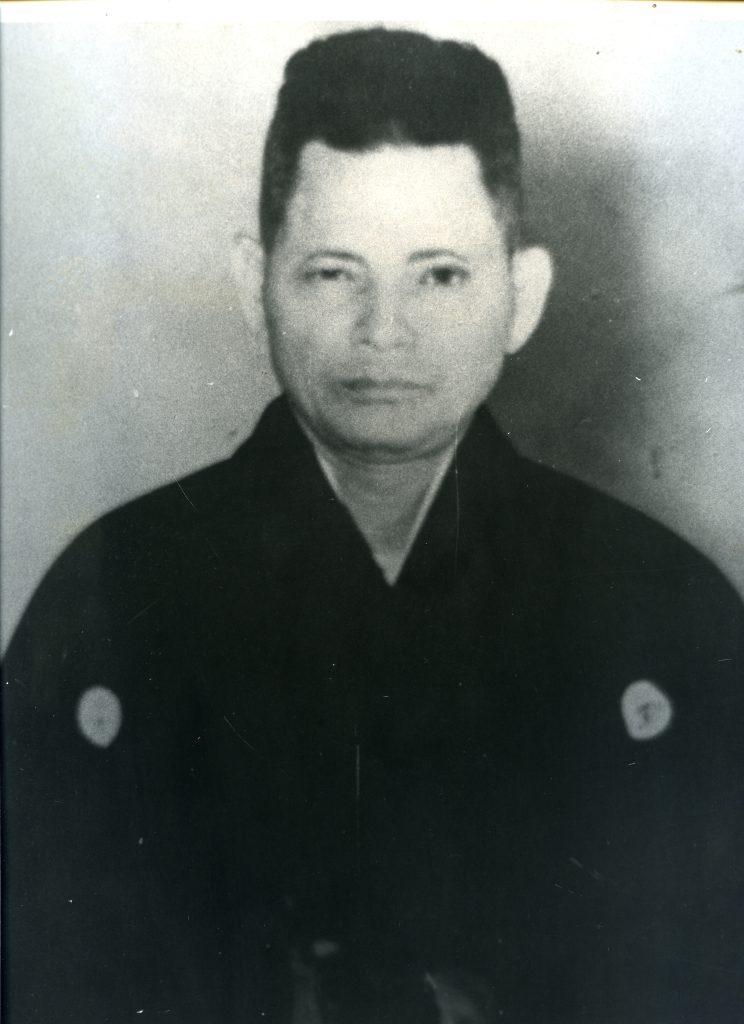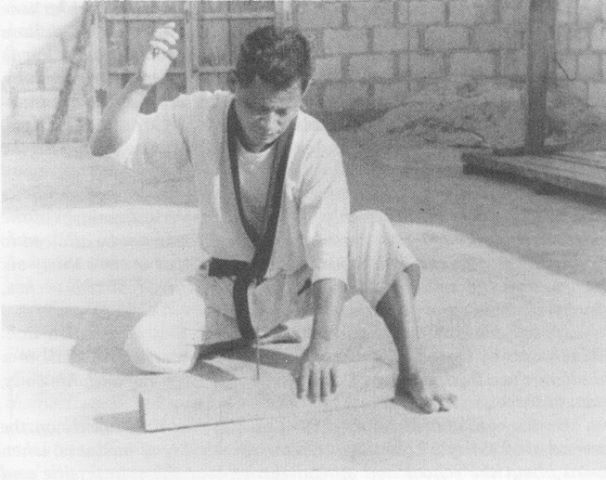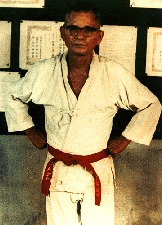History of Isshin-Ryu Karate

The World Budo Alliance is proud to present the History of Isshin-Ryu Karate as part of our preservation of martial art history project. Isshin-ryu (one heart/one mind) was introduced in 1954 by Tatsuo Shimabuku. Sensei Shimabuku Studied both the Shorin-Ryu and Goju-Ryu systems. And also studied Kobayashi-Ryu under Chotoku Kiyan and later under Choki Motobu.
And then he studied the Bo, Sai and Tonfa under Okinawa's most noted instructors. Isshin-ryu is a combination of the best of these styles and weapons techniques. Also epitomizes the powerful, lightning-fast techniques that enabled the weaponless Okinawans to endure the rein of the Chinese empire. And to defeat the sword-wielding Samurai of Japan.
History of Isshin-Ryu Karate
The purpose of this history page is three fold. First to provide an understand of the Okinawan Introduction to Martial Arts.
Secondly to show how Master Shimabuku developed Isshinryu Karate and spread it to the United States. And finally an overview of Isshin-ryu today.
Just as Master Shimabuku refined Isshin-ryu over many years, it is the duty of his students to continue to understand his message. Most importantly to build upon that foundation through the training. Because of the language barrier and the lack of written records from pre-war times there are ambiguities within the information that we have available.
The history of Okinawan martial arts come to us as passed down by word of mouth. (To the best of peoples recollection). Therefore here are compositions that we have about the history of Okinawan karate and Isshin-ryu in particular.
Okinawan Introduction to Marital Arts
Martial arts likely first came to Okinawa sometime during China's T'ang dynasty, 618 to 906 A.D. In Okinawa, they called martial arts Te (hand), or Tode (T'ang hand). Or Okinawa-te (Okinawa hand), or Kara-te (China hand). Therefore in the early 1900's, an alternative meaning for karate, empty hand, became generally accepted.
Different styles of karate were named for towns, such as Naha-te, named for Naha, Okinawa's capital. Or Shuri-te, named for Shuri, the home of Okinawa's ancient kings. And Tomari-te, named for the port of Tomari. Later, Naha-te developed into Goju-ryu, and Shuri-te developed into Shorin-ryu.
History of Isshin-Ryu Karate Spreading of Marital Arts
People flowed between China and Okinawa for business, education, and politics. For instance, a legendary Okinawan martial artist named Chatan Yara reportedly traveled to China (app. 1680) as an apprentice in business. He returned twenty years later with an increased knowledge of martial arts, which he passed on to Peichin Takahara.
And a Chinese official named Kushanku (or Kusanku) served in Okinawa for several years (arriving app. 1761). He taught his knowledge of martial arts to the legendary Okinawan master, "Karate" Sakugawa. Who was also one of Takahara's students.
A shipwrecked Chinese sailor named Chinto washed ashore in Okinawa in the 1800's. He hid in caves and stole food to survive. Therefore authorities sent Sokon "Bushi" Matsumora, a student of Sakugawa, to kill the thief. Thus he and Chinto fought for a considerable time, neither able to win. Matsumora cleverly reported the thief gone, and struck a deal with Chinto, martial arts training for food.
Banning of Martial Arts

History of Isshin-Ryu Karate continues. Most important is that for a time, karate itself was banned. But the Okinawans continued to practice in secret, at night and in caves. Disguising their training forms, kata, as folk dances. The ban on karate was lifted in 1900. Shortly thereafter, Yasutsune Itosu, a student of Matusumora, began teaching it in the high schools.
In 1922, Gichin Funakoshi, a student of Itosu and Yasutsune Asato, demonstrated karate for the crown prince of Japan, and soon thereafter opened the first karate Dojo in Japan. And for this reason, the Japanese call Funakoshi "the father of karate." Also Chotoku Kyan, another of Itosu's students, led the Shobayashiryu branch of Shorin-ryu.
And yet another of Itosu's students, Choki Motobu, became a famous master in the Kobyashiryu branch of Shorin-ryu. Chojun Miyagi, a student of the Naha-te master, Kanryo Higaonna, founded Goju-ryu. Which now branches in Japan and America as well as Okinawa.
Introduction to the United States
And in 1945, the last battle of World War II took place on Okinawa. Afterwards, American servicemen stationed there studied karate as a means of improving their hand-to-hand combat skills. A navy man, Robert Trias, who was middleweight boxing champion of the Pacific Fleet, came back and opened the first known karate Dojo in America. This happened in 1946, in Phoenix, Arizona.
After the Korean War, many American servicemen, especially Marines, studied karate with master Tatsuo Shimabuku, one of which was Don Nagle. And in the 1950's, Don Nagle brought Isshin-ryu to America for the first time. And followed shortly by Harold Long, Steve Armstrong, and Harold Mitchum, and others. The first Isshin-ryu Dojo in Michigan opened in 1964 by Ken Pittaway, one of Don Nagle's students.
Thus the Okinawan style of karate called Isshin-ryu Karate was created by Shinkichi (Tatsuo) Shimabuku and began in 1956. Isshin-ryu karate translates to "One Heart Method". Thus after training in the style of Shorinryu and Gojuryu, Shimabuku created Isshin-ryu, which is a blend of the two styles into one.
History of Isshin-Ryu Karate continues
And it has the speed to get to the target that Shimabuku took from Shorin-ryu and the power to hit that target from Goju-ryu. Therefore the style that he created does not have any flashy or showy moves because it is a style that is designed for fighting. And Isshin-ryu includes characteristics such as short and natural stances, low kicks, snapping in both punches and kicks, and a vertical punch. Isshin-ryu is a style that is very simple and can be learned by anyone who has the desire to learn and has the patience to learn the style well.
Therefore Isshin-ryu came to America in the late 1950's. And in 1955, members of the 3rd U.S. Marine Division were stationed in Okinawa. During their time in Okinawa, the Marine Corps was taught by Master Shimabuku. Most of all as a result, Isshin-ryu Karate was spread throughout the United States once the men returned home later in the 1950's.
Thus it has become one of the largest styles of karate taught in North America. The Isshin-ryu that we see in America today is a blend of what Shimabuku thought of as the best for fighting in Okinawa.
History of Isshin-Ryu Karate
Master Tatsuo Shimabuku History

Early Life:
Tatsuo Shimabuku, founder of Isshin-ryu karate, was born in Okinawa on September 19, 1908. Importantly, Tatsuo, meaning Dragon man, was a nickname given to him for his prowess in the martial arts. Thus it is believed that he began martial arts training around the age of 12 or 13.
Tatsuo first studied under Master Kyan and soon became one of his top students. Also Tatsuo studied Gojo-ryu under its founder Chojun Miyagi.
He also studied under the notorious fighting master Choki Motobu, who taught the Kobayashiryu version of Shorin-ryu.
Therefore Tatsuo regarded Kyan, Miyagi, and Motobu as his most influential teachers, and kept portraits of them in his own dojo in a place of honor.
He learned Okinawan weapons, Kobudo, from Taira Shinkin and Yabiku Moden. In later years, Shimabuku visited China to collect even more knowledge of the martial arts.
And he also experimented; having his students wear full contact armor, to prove which techniques worked the best.
Founding of Isshin-Ryu
Therefore after more than 30 years of study and experimentation, he formulated his own system of karate. And took the best principles and techniques from the styles he studied. This included two empty hand katas from Gojo-ryu ( Sanchin & Seiuchin). And five from Shorin-ryu (Seisan, NaiHanchi, Wansu, Chinto and Kusanku). Also one composed by Shimabuku himself (Sunsu). And five weapons katas (3 bo-staff- ergo: Tokomine no kun no dai, Urashi-bo & Bo shishi no kun) & (2 sai-ergo: Kusanku sai & Chatan Yaya no sai). Plus a number of innovations based on his own observations, such as the vertical fist, and the snap punch!! He also practiced Kyan no sai, and Tuifa katas.
The official birthday for Isshin-ryu is January 15, 1954. The name Isshin-ryu, meaning "One Heart Style" came from Eiko Kaneshi, one of Shimabuku's best Okinawan students. Shimabuku believed the principles of Isshinryu were not just for fighting, but for all of life.
Grand Master Shimabuku was able to witnesses the spreading of Isshin-ryu Karate all along the east coast of the United States before he died on May 30,1975.
Isshin-ryu Karate Today
The training and the techniques have their own evolution over time. The original intent was self- protection in a combat situation, but the techniques had to have their true nature hidden due to political an societal influences over the centuries.
The present day increase in our base knowledge of sports physiology and psychology has also changed our understanding of the material. And in some cases minor modifications made to techniques and the resultant effect is found to be less successful. That is why the RPI IKK studies the techniques that Master Shimabuku first taught his students almost 50 years ago.
Thank you for reading the History of Isshin-Ryu Karate.
Researched by Sensei Kara Borshuk
Edited by Grand Master Art Mason